1896 currency

Since I am a coin-man, you are probably surprised to see this page on paper money. Most US paper money is boring. It all looks the same. We are the only country in the world that makes all of our bills the same size and color with a portrait on the obverse and a building on the reverse. Boring, boring, boring. But there was a brief time in history when our paper money was artistic. This occurred in 1896 with the Educational Series. The one dollar silver certificate personifies history teaching youth.
No One Should Get Between George and Martha!
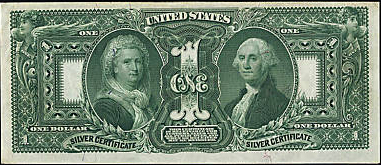
On the reverse are George and Martha Washington with the numeral one between them. There is a legend that this caused objection by people who said that no 1 should get between George and Martha. This is probably historical nonsense.
The 1896 Two Dollar Silver Certificate
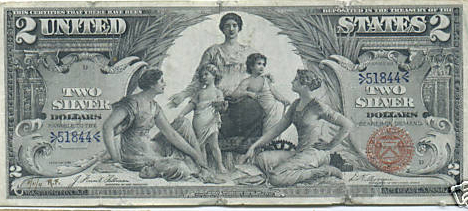
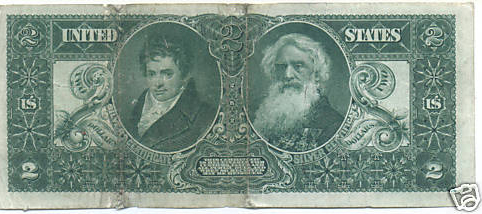
The two dollar educational note is an allegory of Science presenting steam and electricity (both depicted as children) to Industry and Commerce (depicted as young women. The reverse shows Samuel Morse and Robert Fulton. Fulton invented the steamboat. Morse invented Morse code. Paper money was not always the exclusive domains of dead ex-presidents.
The 1896 five dollar note
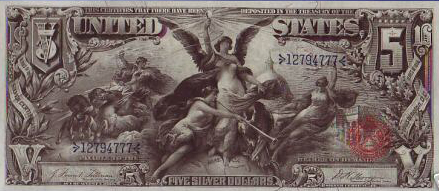
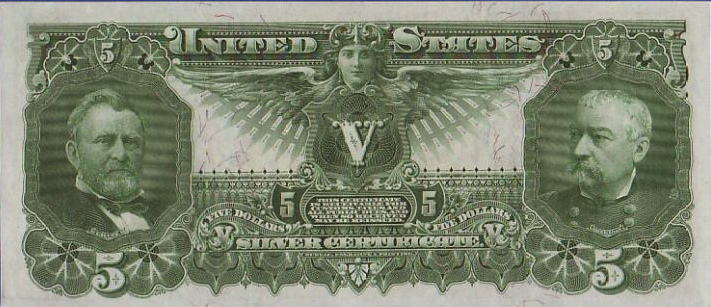
The five dollar note contained the design that proved to be the undoing of the series. Again, we have an allegory with a winged female representing electricity as the new dominant force in the world.
Banned in Boston
All went well for the Educational series until the notes were delivered to a bank in Boston (Cabot, Cabot and Forbes) and the bankers' wives found the five dollar bills. Appalled by the presence of a bare breast, they ordered their husbands not to allow these shameful bills into the bank. And this is the origin of the term, "Banned in Boston." Because of this objection, the series was short-lived. A ten dollar note (depicting more nudity) was abandoned, and as a nation, we were sentenced to over a century of boring paper money designs. In 1899, the hussies were replaced by an Indian chief.Collecting the educational series
The 1896 education series notes are considered the most beautiful of the US notes (except of course by the Boston Banker's wives). The series was brief, making the notes relatively scarce. Bills in pristine condition can be quite valuable. Expect to pay well over $1000 for a nice sample of the two or five dollar bill. Replicas of these bills exist. It is safest to buy certified notes to assure authenticity.